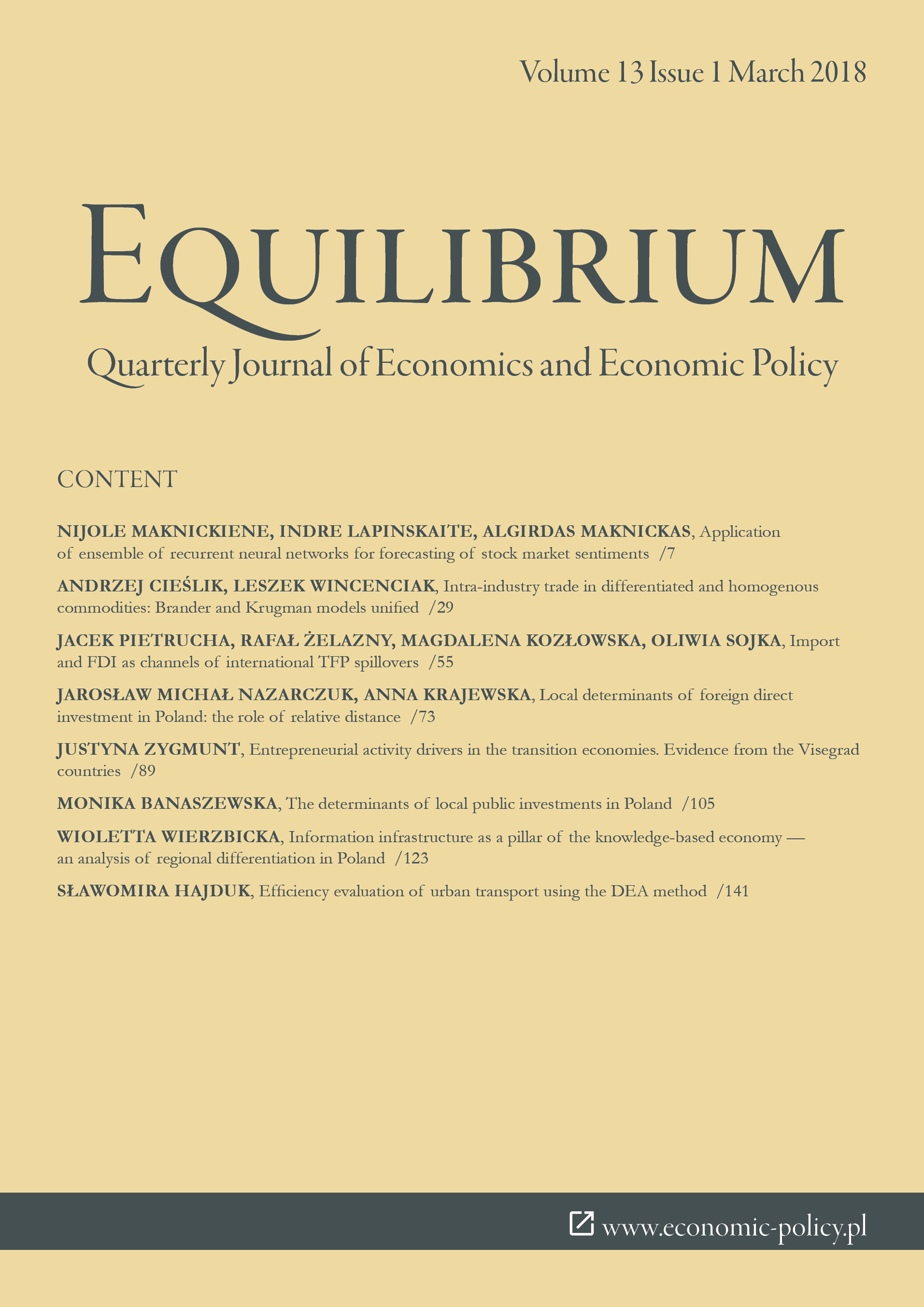Efficiency evaluation of urban transport using the DEA method
Efficiency evaluation of urban transport using the DEA method
Author(s): Sławomira HajdukSubject(s): Economy, Methodology and research technology, Evaluation research
Published by: Instytut Badań Gospodarczych
Keywords: efficiency assessment; urban transport; data envelopment analysis; city management;
Summary/Abstract: An efficient and effectively functioning transport of a city is of great importance both for people who reside within it, as well as companies doing business there. It is an integral part of modern economy and society in the dimension of production and consumption. However, apart from having a positive impact, transport also carries many social costs including congestion, traffic accidents and a negative influence on the natural environment. Consequently, urban transport is an increasingly important area of city management. Purpose of the article: The aim of this study is to assess the technological effectiveness of transport in selected Polish cities. The author created a ranking of cities and identified ways of improve efficiency. Methods: The test procedure used the non-parametric method of Data Envelopment Analysis (DEA). The data for analysis was drawn from the Local Data Bank of the Central Statistical Office defining expenses in the transport section as well as data on the condition and use of transport infrastructure. Calculations were made using Frontier Analyst Application software dedicated to the DEA method. Performance results were determined using the BCC model. The analysis was conducted for 18 cities with district status from 150 to 500 thousands inhabitants. Findings & Value added: The main result is the author’s ranking of transport effectiveness in Polish cities. The analysis showed that urban transport is characterized by a rather low technological effectiveness. Full technological efficiency has been shown by five cities: Białystok, Sosonowiec, Bielsko-Biała, Olsztyn and Rzeszów. An average of the urban transport efficiency reached 51.1%. The lowest effectiveness was only 2.77%. This means that a substantial number of cities do not use optimal inputs. The DEA method enriches the methodology used by scientists to study transport effectiveness.
Journal: Equilibrium. Quarterly Journal of Economics and Economic Policy
- Issue Year: 13/2018
- Issue No: 1
- Page Range: 141-157
- Page Count: 17
- Language: English

